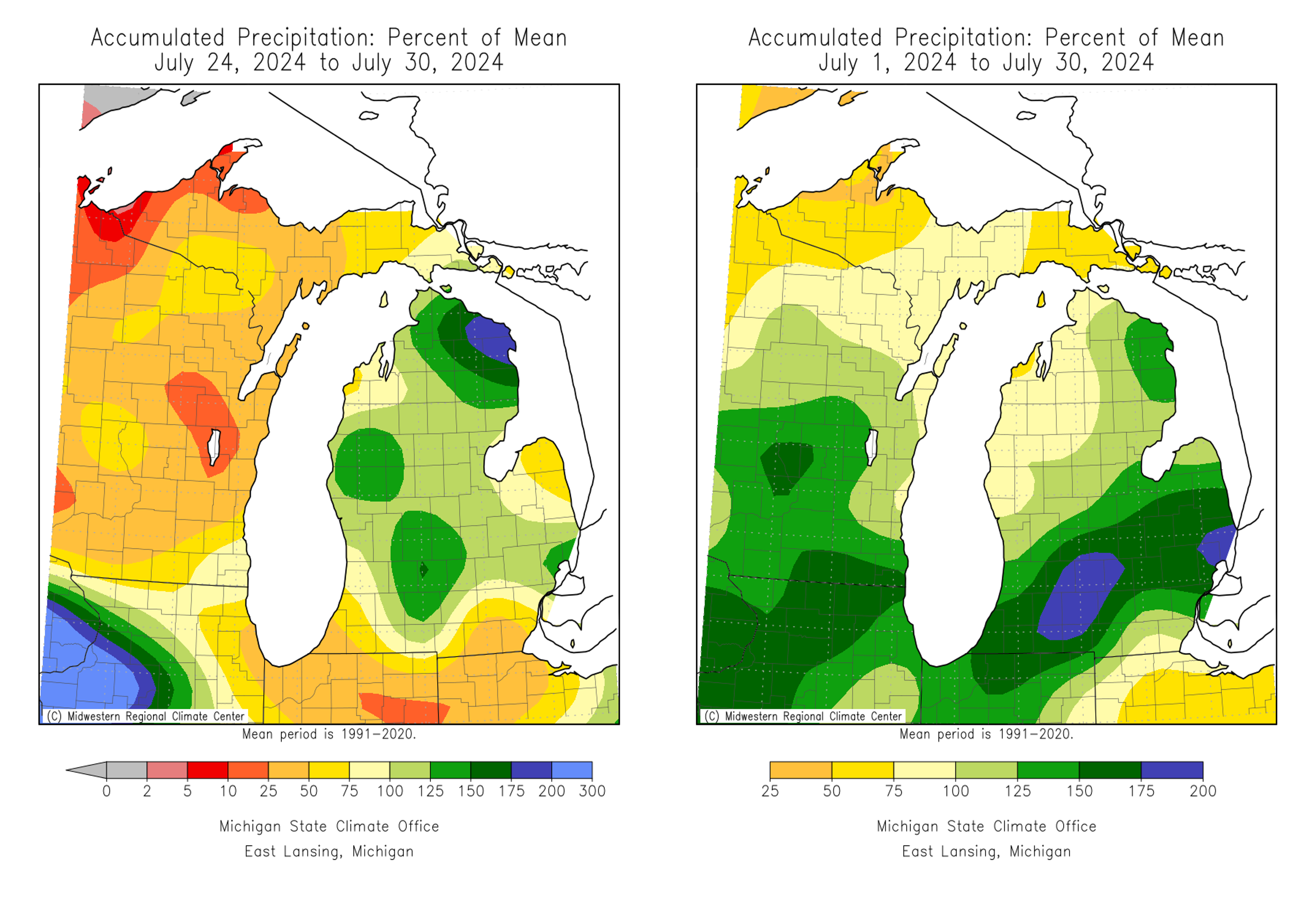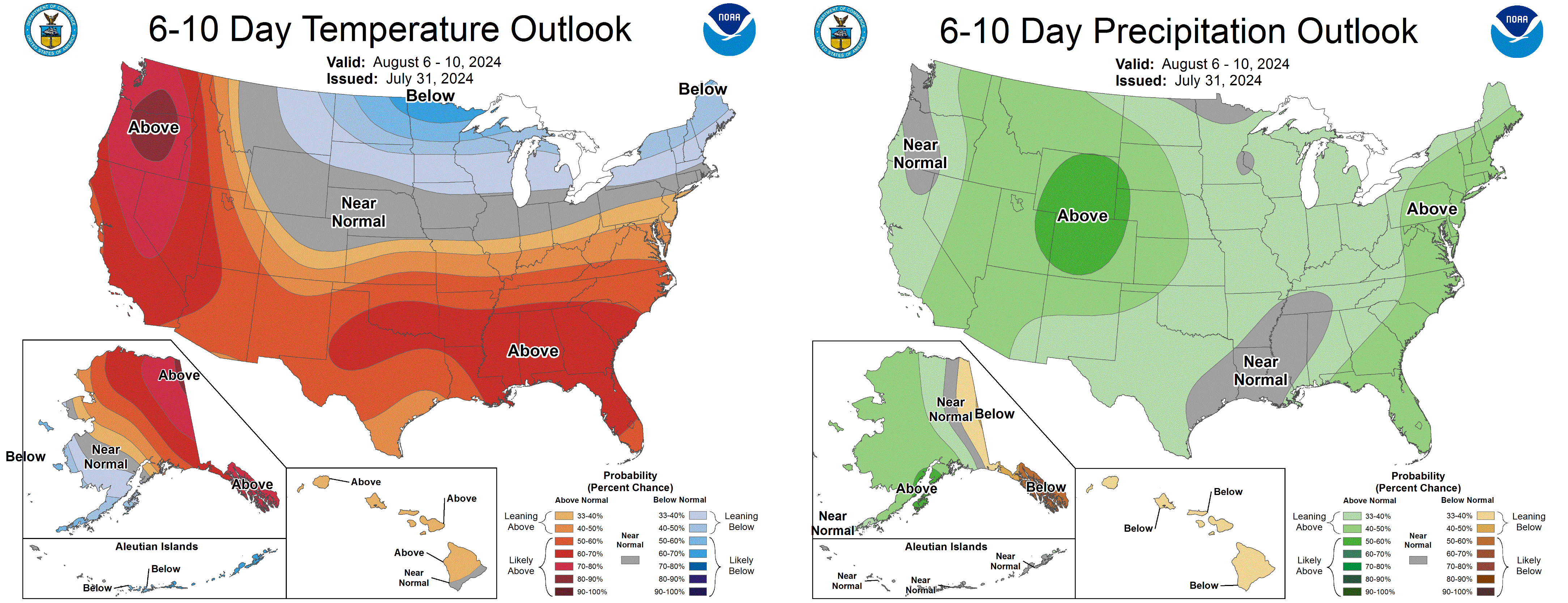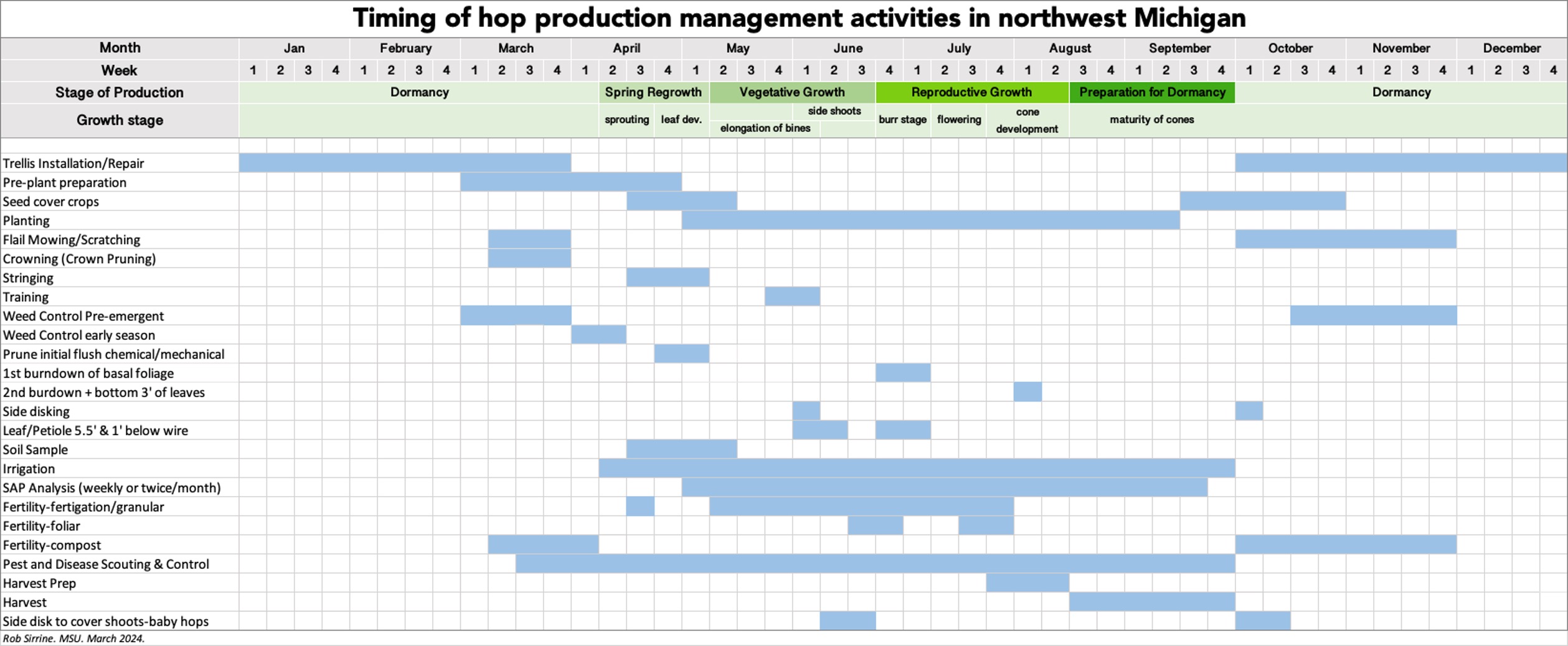Michigan hop crop report week of August 1, 2024
Warm and humid weather will make way for slightly cooler temperatures next week.

Weather review
Over the last month, most areas of the state have seen average temperatures for this time of year. Accumulated precipitation is variable depending upon location with above average precipitation across much of the southern Lower Peninsula. Exceptions include northwest Michigan and the Upper Peninsula with below average precipitation.


For the Lower Peninsula, growing degree days (base 50) range from just over 1,300 in northwest Michigan to nearly 1,900 in southern Michigan. This equates to seven to 14 days ahead of normal for most of the Lower Peninsula. Most areas of the Upper Peninsula are closer to average.

Looking ahead
Medium range guidance suggests slightly below normal temperatures for Michigan. The 6-10 day forecast also suggests normal to above normal precipitation.

See the most recent Michigan State University agriculture weather forecast.
Stage of production/physiology
Hops across Michigan are in Principal 3: Elongation of Bines, Growth Stage 5: Inflorescence emergence, Growth Stage 6: Flowering, and Growth Stage 7: Development of cones depending upon growing location and cultivar.

In the field
Across Michigan, hops are at the wire depending on growing location and cultivar. Growers are foliar fertilizing, and with the warm, humid weather are applying plant protection products for disease control. Plant growth is about a week ahead of normal in most growing locations.

Sincere thanks to the Michigan hop producers who provided timely input for the Michigan Hop Crop Report.
For pest information please see the August 1, 2024 Hop Pest Report.
Stay connected!
For more information on hop production practices, please sign up for the hop MSU Extension Newsletter, the free MSU Hop Chat Series and continue to visit Michigan State University Extension’s Hops webpage or the MSU Hops News Facebook.
If you are unsure of what is causing symptoms in the field, you can submit a sample to MSU Plant & Pest Diagnostics. Visit the webpage for specific information about how to collect, package, ship and image plant samples for diagnosis. If you have any doubt about what or how to collect a good sample, please contact the lab at 517-432-0988 or pestid@msu.edu.
Become a licensed pesticide applicator
All growers utilizing pesticide can benefit from getting their license, even if not legally required. Understanding pesticides and the associated regulations can help growers protect themselves, others, and the environment. Michigan pesticide applicator licenses are administered by the Michigan Department of Agriculture and Rural Development. You can read all about the process by visiting the Pesticide FAQ webpage. Michigan State University offers a number of resources to assist people pursuing their license, including an online study/continuing ed course and study manuals.
This work is supported by the Crop Protection and Pest Management Program [grant no 2021- 70006-35450] from the USDA National Institute of Food and Agriculture and the North Central IPM Center. Any opinions, findings, conclusions or recommendations expressed in this publication are those of the author(s) and do not necessarily reflect the view of the U.S. Department of Agriculture.



 Print
Print Email
Email
